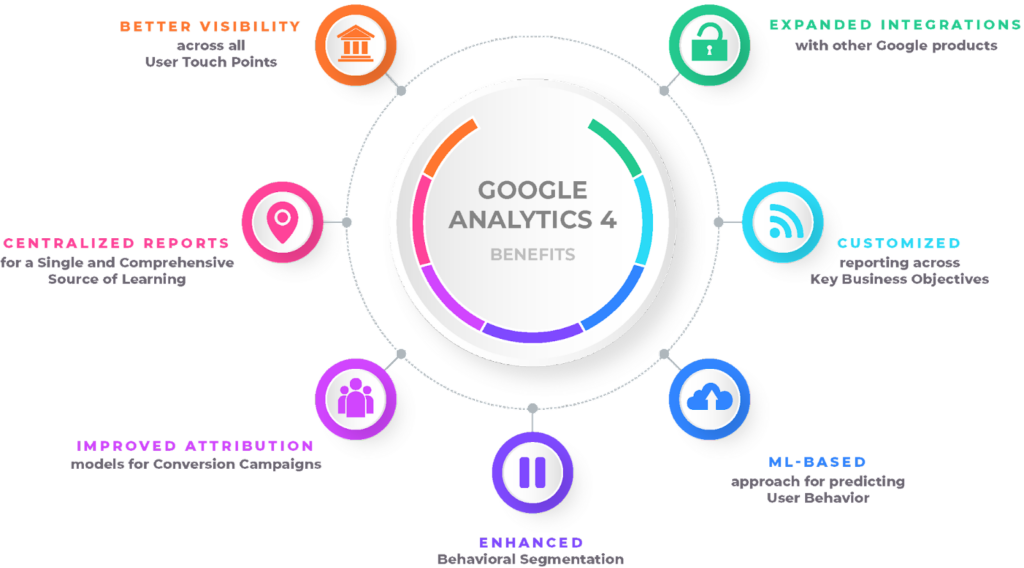What is a "Dimension" in Google Analytics? Discover How It Forms Your Data
What is a "Dimension" in Google Analytics? Discover How It Forms Your Data
Blog Article
Optimize Your Advertising And Marketing Strategy With Advanced Google Analytics Dimensions Techniques
In today's affordable electronic landscape, using the power of advanced Google Analytics measurements methods is extremely important for organizations looking to fine-tune their marketing techniques. Remain tuned to discover exactly how these techniques can reinvent your advertising strategy and drive tangible results in an ever-evolving digital ecological community.
Recognizing User Actions Insights
Comprehending Customer Behavior Insights is an essential element of any kind of advertising and marketing approach. By making use of tools like Google Analytics, businesses can acquire important insights right into just how customers connect with their website. These insights can aid online marketers make data-driven decisions to maximize their campaigns and improve the customer experience.
Analyzing individual behavior can expose vital metrics such as bounce rate, session period, and pages per session. Jump rate, for example, indicates the percentage of visitors that leave a website after watching just one web page (what is a “dimension” in google analytics?). Recognizing this metric can aid marketers identify potential problems with landing web pages or web content that may be driving site visitors away
Additionally, tracking customer habits can also give understandings into the efficiency of marketing campaigns. By checking metrics such as conversion prices and objective completions, services can assess the influence of their advertising efforts and make changes as required.
Tracking Conversion Paths
Examining conversion courses is a basic facet of a thorough marketing strategy. By tracking the series of interactions individuals have with your internet site before completing a wanted objective, you can obtain valuable insights into the performance of your advertising efforts. Google Analytics supplies necessary tools to keep track of conversion paths, enabling you to understand which touchpoints and networks add most to conversions.
Through conversion path monitoring, you can identify the most typical courses users take before transforming, aiding you enhance these pathways for far better outcomes. By assessing the different steps users take, you can identify possible bottlenecks or locations for renovation in your advertising channel.
Additionally, tracking conversion paths enables you to associate conversions accurately to particular advertising networks, projects, or material (what is a “dimension” in google analytics?). This information is critical for assigning sources efficiently and taking full advantage of the ROI of your marketing campaigns
Utilizing Customized Dimensions Successfully
When aiming to enhance the deepness of insights gotten from Google Analytics, services can utilize the power of personalized measurements effectively. Personalized dimensions allow businesses to accumulate and evaluate data details to their unique demands and goals. By defining custom-made measurements, organizations can track and gauge information that is not captured by default in Google Analytics, such as customer qualities, communications, or item details.
To make use of customized dimensions effectively, companies need to initially determine the essential metrics and dimensions that straighten with their advertising objectives. For example, an ecommerce website may produce personalized measurements to track the dimension or color of products seen by individuals. By integrating these customized measurements right into their analytics monitoring, services can gain a much deeper understanding of user behavior and choices.
In addition, custom dimensions can be used to section data effectively, providing even more targeted understandings for marketing projects and techniques. By combining personalized measurements with other Google Analytics features, businesses can enhance their marketing initiatives and drive much better outcomes based upon a much more comprehensive evaluation of user habits.

Advanced Segmentation Strategies
Structure upon the structure of using custom dimensions effectively in Google Analytics, businesses can further improve their information evaluation capacities through advanced segmentation techniques. By segmenting data, organizations can gain deeper insights right into the habits of particular teams of clients or customers. Advanced segmentation enables the production of more complex and details audience groupings based on different criteria such as demographics, behavior, or traffic sources.
One powerful segmentation strategy is friend analysis, which includes organizing individuals based upon shared characteristics or behaviors over a certain duration. This can help organizations comprehend fads and patterns among various individual segments. One more effective technique is RFM division, which classifies individuals based on their recency, frequency, and financial value of their interactions with the website or application.

Enhancing Attribution Modeling
Enhancing Acknowledgment Modeling involves fine-tuning the method businesses attribute conversions and designate credit to different touchpoints along the consumer trip. By executing innovative attribution versions in Google Analytics, organizations can gain deeper understandings into the efficiency of their marketing more channels and projects. These designs exceed the standard last-click acknowledgment and think about the impact of all touchpoints that add to a conversion.
One popular acknowledgment design is the moment Decay model, which offers extra credit history to touchpoints closer to the conversion event. This assists organizations understand the impact of mid-funnel and very early touchpoints in driving conversions. One more model is the Position-Based design, which assigns credit scores based on the position of a touchpoint within the client journey, offering even more weight to the last and initial communications.
Enhancing Attribution Modeling enables services to make more informed decisions about their advertising budget allocation and strategy. By properly attributing conversions to the best touchpoints, organizations can maximize their marketing initiatives for far better outcomes and ROI.
Final Thought
To conclude, leveraging advanced Google Analytics measurements strategies gives businesses with useful insights into user behavior, conversion courses, and division methods. By utilizing customized measurements properly and carrying out sophisticated division techniques like cohort analysis and RFM division, organizations can maximize their advertising strategies for improved conversion prices and more reliable campaigns. Enhancing attribution modeling further click resources enhances the understanding of customer communications, eventually bring about better-informed decision-making and targeted marketing efforts.
In today's competitive electronic landscape, utilizing the power of innovative Google Analytics dimensions strategies is paramount for services looking to refine their advertising methods.Understanding Individual Behavior Insights is a vital aspect of any advertising strategy. By tracking the series of communications users have with your internet site prior to completing a desired goal, you can gain useful understandings right into the effectiveness of your marketing efforts (what is a “dimension” in google analytics?). By utilizing custom dimensions efficiently and executing innovative segmentation methods like friend analysis and RFM division, businesses can maximize their advertising methods for boosted conversion prices and even more efficient campaigns. Enhancing attribution modeling better boosts the understanding of customer interactions, eventually leading to better-informed decision-making and targeted advertising efforts
Report this page